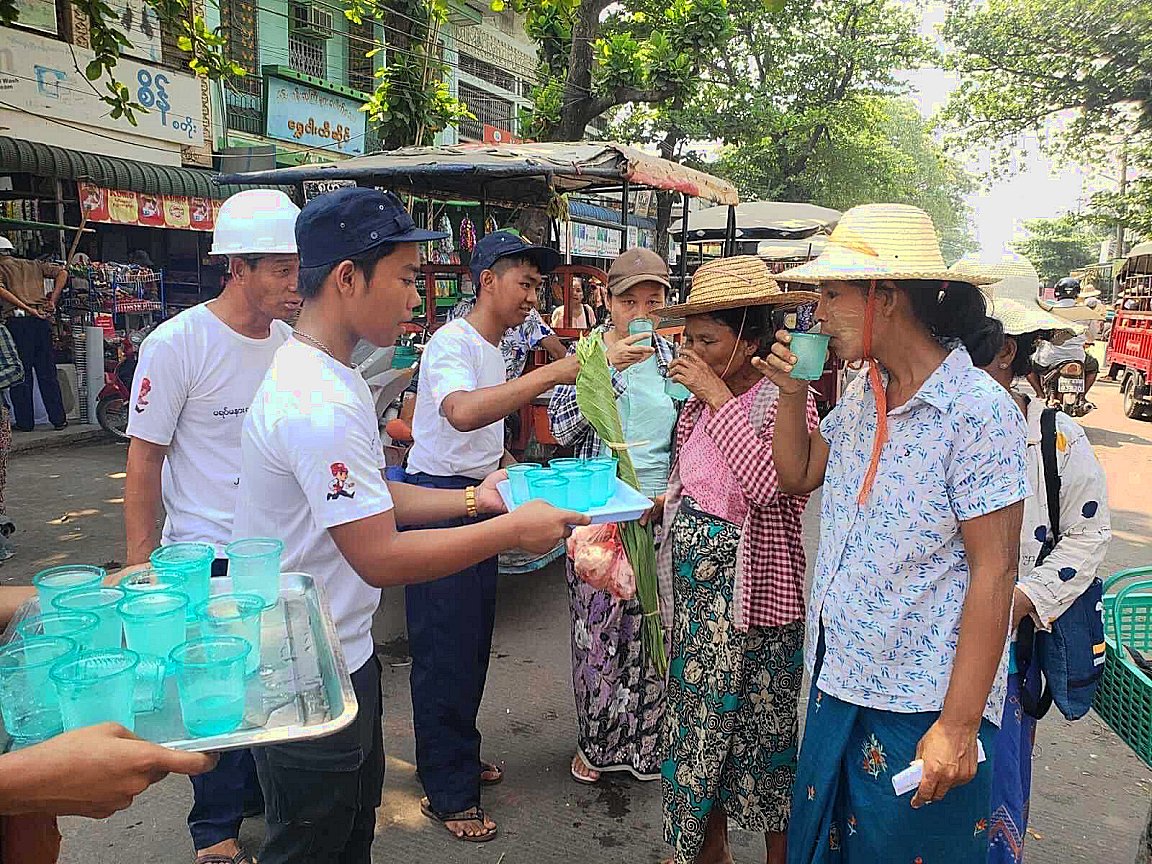
Searing temperatures sweep across Asia, causing distress for millions

By the IFRC
(This story is an IFRC press release issued jointly yesterday in Kuala Lumpur, Yangon, Dhaka and Geneva. It has been edited here for length and time references.)
As scorching heatwaves sweep across the Asia Pacific region and countries hit record-breaking temperatures, the IFRC warns that millions of people including children, the elderly, outdoor labourers and individuals with low immunity and pre-existing conditions are at very high risk.
National Societies in (alphabetically) Bangladesh, Malaysia, Myanmar, Nepal, the Philippines and others are already responding with urgent initiatives to help and relieve people through this relentless heat.
Climate change is, in large part, to blame. A report released yesterday by World Weather Attribution, a scientific group supported by the Climate Centre, found all these heatwaves have been driven by climate change.
The Philippines heatwave would have been “virtually impossible” without human-induced climate change.
Across South Asia, heatwaves have become about 45 times more likely and almost a full degree Celsius hotter because of climate change. In coming years, WWA finds that heatwaves in Asia will become even more severe and frequent.
Moe Thida Win, MRCS Deputy Director of Disaster Management, says: “The Myanmar Red Cross Society is responding to heatwaves by sharing efficient ways to prevent heat risks through education and awareness-raising, in Ayeyarwady, Mandalay, Magway, Yangon, Bago and Tanintharyi regions and Kayin and Mon states.
“This includes distributing brochures and posters, oral rehydration solutions, clean water (photo), and towels to help people cool down at crowded places across the country.
“Access to clean water remains a daily challenge in certain areas of Myanmar and the MRCS is meeting this need by delivering essential drinking water supplies.
“On top of this, cash assistance is being provided to over 250 low-income families from Shwe Pyi Thar, Dala, and Dagon Seikkan townships in Yangon, with support from German Red Cross.
Level 1 heat
The extreme temperature of 48.2°C was recorded in Chauk in central Myanmar’s Magway region on 28 April. According to the Department of Meteorology and Hydrology of Myanmar, the highest temperature was seen in Naung-U, Minbu and Sagaing in Myanmar in April since records began 56 years ago, with a devastating impact on migrants and vulnerable populations, many millions of whom are already in humanitarian need.
“These families include daily labourers working under the sun, families with disabilities, and families with infants or elderly members. Additionally, the MRCS is planning to install three cooling stations in these townships for resting areas.”
In April, the Philippines reported 118 cities and municipalities in a “state of calamity” because of the El Niño phenomenon. This prompted the national government to suspend classes at various levels.
Meanwhile, 31 areas in Malaysia, have been issued a Level 1 heatwave alert: 35°C to 37°C for three consecutive days.
In Bangladesh, heat-related fatalities and cases of dehydration, electrolyte imbalances, fatigue, vomiting, fever, fainting, diarrhoea, pneumonia, and sunstroke are on the rise.
On 29 April, Dhaka recorded its second highest temperature in six decades, reaching a scorching 40.6°C, with the average highest temperatures usually around 33.2°C.
‘Critical conditions’
Meteorologists forecast that the extreme heat will continue into May, necessitating ongoing vigilance and support for impacted communities. The current and prolonged heatwave is the longest since records began in 1948.
Kazi Shofiqul Azam, Secretary General of the Bangladesh Red Crescent Society, said: “We are observing first-hand the critical conditions faced by outdoor workers like rickshaw pullers and construction workers who are significantly impacted.
“This heatwave undoubtedly represents a new and exceptionally dramatic event, the likes of which we have not witnessed in the past 76 years. Alerts are now in place in 57 out of 64 districts, affecting approximately 120 to 125 million people.
“The Bangladesh Red Crescent Society, along with the IFRC, is fully engaged and on the ground in urban areas, distributing water, saline packets, and essential supplies, and providing first aid to ensure that no one is left behind during this critical time.”
Action on extreme heat is an increasing part of the work facing the IFRC and its network. In March, the IFRC and USAID jointly held a summit meeting on the threat of extreme heat worldwide. That led to an online hub for people to share ideas to tackle the issue.
The IFRC-led Heat Action Day on 2 June will put a renewed focus on the dangers extreme heat poses and how city officials and others can #BeatTheHeat.
Myanmar Red Cross volunteers marked this year’s World Red Cross Red Crescent Day on 8 May by helping passers-by stay hydrated. (Photo: MRCS via IFRC)